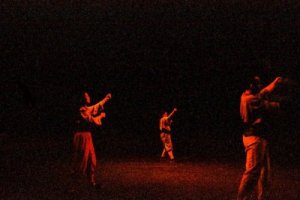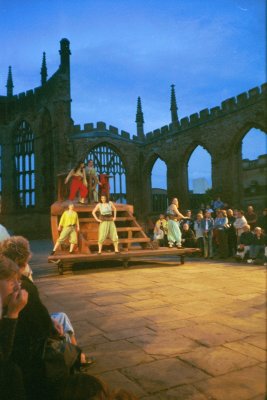"Community Development is the deliberate attempt by community people to work together to guide the future of their communities, and the corresponding set of techniques for assisting community people in such a process."
— Lee J. Gary, Community Development as a Process
Community Development: What It Is and What It Is Not.
Before moving into a discussion of what community development is, it might be useful to comment on some current concepts that should not be confused with community development. These include:
• Adjustment: This is a term that is particularly used by policy makers. An adjustment serves to modify, improve, or correct an existing policy or program. Unlike community development, it is not likely to change the fundamental nature of the effort.
• Modernization: Modernization is best understood to involve the adoption of new technologies, new methods, new materials, new physical technologies, etc. Modernization may or may not be based on community development.
• Growth: This concept more than any other appears to be confused with community development. Growth is often used as a synonym for economic or industrial development or expansion. Such initiatives are often essential elements of community development, but should not be construed as the complete picture.
Having clarified that none of the above concepts is the same as community development, let us now discuss what community development is.
In popular language, the term "community development" is often used to refer simply to change (modernization or growth) in the community. This confuses "community development" as a specialized term with the non-specialized idea of "the development of the community." In fact, community development leads to the development of the community. Put more accurately, the community development process leads to the effective development of the community
Community development is not about bricks and mortar, nor is it the physical planning of streets, roads, subdivisions, land use, or other matters which are the specialty of professional "community or regional planners." Rather, community development is an educational process that emphasizes human capacity building, which in turn leads to the "development of the community." This distinction is critical to understanding the essentials of community development.

County Galway Community Arts Network.
While there are numerous definitions of community development, most of them contain the following essentials in one form or another:
Community as the unit of action.
In community development as an (educational) process, things happen in groups; in a sense of community. The people involved have common interests which are observable through common culture, values, visions of the future and so on. There is a sense of belonging together. Use of both internal and external resources
Community may involve a geographic unit (such as an urban neighborhood), a rural community (a village or town with surrounding farms), a collection of communities (micro-region) or a community of interest (women, youth, farmers, Aboriginals, etc.). In defining community, the emphasis is on "collective for," rather than "local to."
Although the context of community must be clearly defined as part of the developmental process, there is always the risk that the community may be too narrowly defined, and thus leave out potential stakeholders in the process.
Community leadership/initiative as resources
The direction for the process is derived internally. People from the community must assume leadership positions. Community initiative calls for active, indeed proactive, leadership. Leaders must have, and help create, the vision that forms the basis of future action. This does not mean that a few leaders are to dominate planning and action. The functions of leadership include acting as catalyst and facilitator. In addition, leadership responsibilities may be shared and passed among members of the community. To help ensure appropriate leadership, continuous education is essential.
The development of communities takes resources of all kinds: leadership, material, financial, educational, policy and program etc. The community development process seeks to make the most effective use of all resources in an appropriate way. As an example, local people are obliged to contribute what they can before going to external sources, such as government, for financial support. This is contrary to our tendency to seek external sources first and then, if necessary, topping them up with our own contributions.
Especially when considering financial resources, it is important to consider whether or not the source of the funds is skewing the community development process. Communities must ask themselves whether the resources are guiding the program or project, or the program or project is guiding the resources. Innumerable communities have pursued certain courses of action just because "the money is available," and have then wondered that the endeavor soon lost momentum. True community development is based on the identified needs and priorities of the community, and not on the mandate of a funding agency.
The current lack of government funds for developmental projects is leading communities and groups to learn again that they can best initiate, control, and sustain their future if they make their commitment first before going elsewhere. Certainly partnerships are critical to successful community development endeavors, but if there is no commitment of resources by the community, there is likely to be less long term commitment to the project or program.

County Galway Community Arts Network.
Inclusive participation
It is essential to the community development process that all potential stakeholders within the community are given appropriate opportunities to participate. The community development process calls for an appropriate investment in participatory activity.
Naturally, some people will participate more actively than others and people will participate in a variety of different roles, some as leaders and some as followers. Often, we see too little participation rather than too much. However, if leaders in community affairs make authentic efforts to involve all segments of the community in planning and action, that will go a long way to ensuring the long-term success of the project or program. Sometimes this may involve making special efforts to reach segments of the community that are not easily reached by conventional means of public involvement and education.
A danger is that leaders elected, appointed, volunteer tend to feel it most appropriate to carry the ball themselves. Sometimes they sincerely see it as their responsibility; sometimes they are simply unprepared to invest the time or money it takes to involve others. They may not see the long-term advantage of building support and a sense of ownership on the part of all stakeholders. However, research has indicated that even in the private sector success often stems from a company's willingness to involve its employees and customers in determining its priorities and directions.

County Galway Community Arts Network.
An organized comprehensive approach involves the entire community
A community is too complicated to keep development moving uniformly on all fronts at any one time. Naturally, projects and programs have to be phased to fit time and resources. Nevertheless, balance between social and economic domains and the various sectors in the community is important.
The social domain encompasses those matters having to do with quality of life such as
a) structures and relationships in organization or in the community as a whole,
b) cultural matters,
c) political processes in the community,
d) spiritual matters, ranging from the community outlook to people's belief systems.
The economic domain encompasses matters such as jobs, expenditures and revenues, taxation, income, enterprise development, business retention and expansion and so on. Sectors in the community include health, education, agriculture, manufacturing, leisure activities, etc.
Work on one front should be undertaken with concern for its impact on all other parts of the community. Although negative impacts and influences cannot always be avoided, effort is made to reduce them to the greatest extent possible. This is often referred to as the "holistic" approach to the development of community.
Democratic, rational task accomplishment
The process by which community decisions and priorities are put into action must be democratic, rational, and oriented toward accomplishment of the task(s). Further, community priorities should not be sabotaged by individual perceptions of how events should proceed. A community's vision leads programs and projects
A community's vision sets the direction for action.
The vision is created through broad involvement of community citizens and groups. Development based on a vision of where we want our community to be allows development efforts to be proactive rather than reactive. In our society our activities are often centered on the solving of problems and issues. This is especially true during hard times. In a more ideal planning context, community activities are centered on needs and opportunities derived from consensus on our vision for the future of the community, tempered by a realistic assessment of the current reality.
